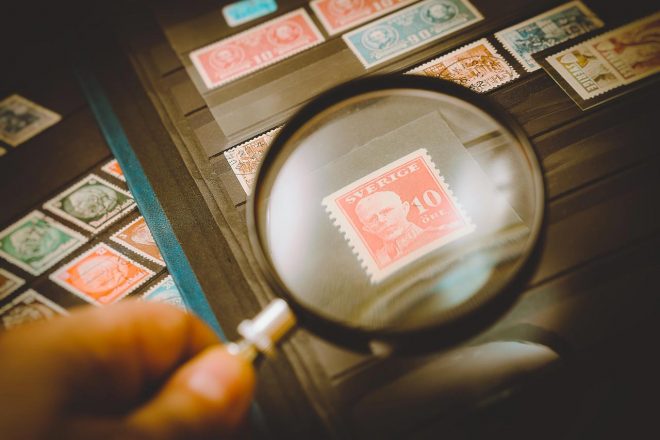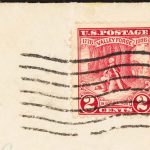
How to Care for a Stamp Collection: Stamps are used all over the world to send parcels and letters. In addition to their distinct functionality, stamps also make popular collector’s items. Due to their historical value and the plethora of art/design options available, many people have taken up philately (stamp collecting) as a hobby. Philately refers to the study of postal history, stamps, and other related items.
As a stamp collector, it is crucial to take proper care of your aging stamp collection. Since a stamp is inherently just a small piece of paper, it is very fragile and often quite challenging to keep in mint condition. Here are some steps you can take to minimize the chances of your collection being damaged.
Contents
Don’t touch the stamps
The first thing you need to know about maintaining your stamp collection is simple; do not touch the stamps! Fingers attract oils, acids, grime, and dirt that will stain and discolor your stamp collection over time. To avoid this, use stamp tongs or tweezers to move your stamps. Tongs utilize smooth jaws that allow you to pick up stamps with ease without tearing or folding them.
There are three main types of stamp tongs:
- Pointed end stamp tongs – These tongs have a sharp and tapered point, which allows you to pick up individual stamps from a pile, and place them on stamp mounts. Keep in mind, pointed stamp tongs should always be handled with care since they can easily puncture a stamp
- Spoon end stamp tongs – Also referred to as shovel tip stamp tongs, spoon end stamp tongs are characterized by broad ends that can bend at an angle
- Spade tip stamp tongs – These tongs have a blunt and flat end that allows you to get a firmer grip on the stamp without damaging its perforation mark or its surface. Spade tip stamp tongs are ideal for holding a stack of stamps
Choose the right stamp stockbook/album
Stockbooks and albums are the two most common ways of storing stamp collections. When selecting a stockbook or album, consider the paper quality, paper color, binding type, and interleaving material. To ensure your collection survives for a long time, store your albums and stockbooks upright to distribute weight more evenly. You should also avoid overstuffing an album or stockbook since it will put too much pressure on the stamps and could cause damage.
Store stamps high up
Instead of keeping your stamp collection in a box on the floor, store them on a high shelf or cupboard. Doing so will minimize the chances of water damage due to burst pipes, accidental spills, or floods. Water can cause damage, such as fungal infections, warping, and gum damage.
Besides lowering the risk of water damage, storing stamps in a high place keeps them away from children who could unknowingly destroy your collection.
Store stamps in a dry space
Besides water, humidity is another factor to consider when storing your stamp collection at home. While temperatures may remain relatively stable throughout the year, humidity levels can change drastically. Humidity can cause mildew growth, mold, warping, and other conditions that can all lower the value of your collection. To avoid this, be sure to store your stamps in a dry room that doesn’t experience much condensation throughout the year. If you live in an area that is prone to humidity shifts, you could also consider installing a dehumidifier or humidifier to maintain moisture content levels between 35 and 55%.
Store stamps in a dark room
Your chosen storage space should not only be dry, but it should be dark. You are probably aware of the damage that sunlight can have on dyed materials, paintings, upholstery, clothing, and printed materials. In the same way, excessive sunlight can cause cracking, yellowing, color changes, or fading on stamps. For long term preservation of your collection, it’s crucial to minimize your stamp collections exposure to direct sunlight. While it’s tempting to feature your favorite collections in a prime location for easy viewing, it is more advisable to keep them in the dark as much as possible.
Store stamps in a temperature-regulated room
Stamps can also be damaged by frequent shifts between high and low temperatures. Changes in temperature can cause the paper to contract or expand, thus accelerating deterioration. Philatelists (stamp collectors) should never keep their stamps in a garage, basement, or attic where temperatures are likely to fluctuate. Store your stamps in a room where the temperatures are unlikely to fall outside the range of 65°F to 72°F.
Protect your stamps from pests
Pests such as microorganisms, insects, and mice love organic materials such as paper. These pests are capable of causing irreversible damage to your collection within a very short amount of time. To prevent this, always avoid storing your collection in a paper container. Also, be sure to seal off entryways in your home to prevent infestation.
Protect your stamp collection from chemical damage
Chemical damage occurs due to the presence of perfumes, aerosol sprays, or pesticides in the air. Such chemicals can cause delicate paper stamps to break down over time. Storing your collections in an airtight container is the most effective solution for limiting long-term exposure to chemicals. You should also be extra vigilant when working or cleaning around an exposed collection.
Protect your stamp collection from theft
The theft of valuable or rare stamps is, unfortunately, becoming increasingly common. While the typical thief rarely knows much about the value of stamps, it is still vital to protect your collection from intruders. Keep them under lock and key. You could even consider placing your valuable collection in a bank safety deposit box, which simultaneously addresses many of the issues mentioned above.
Buy insurance for your stamp collection
No matter how careful you are about caring for your stamps, accidents can still happen. Besides having historical and aesthetic significance, a valuable stamp collection also has a financial value that should be protected. Today, many companies have special insurance packages for stamp collections. When your stamps are insured, you will be compensated in certain situations (depending on the type of damage and coverage purchased). Please note that a professional appraisal will likely be required before coverage is granted.






